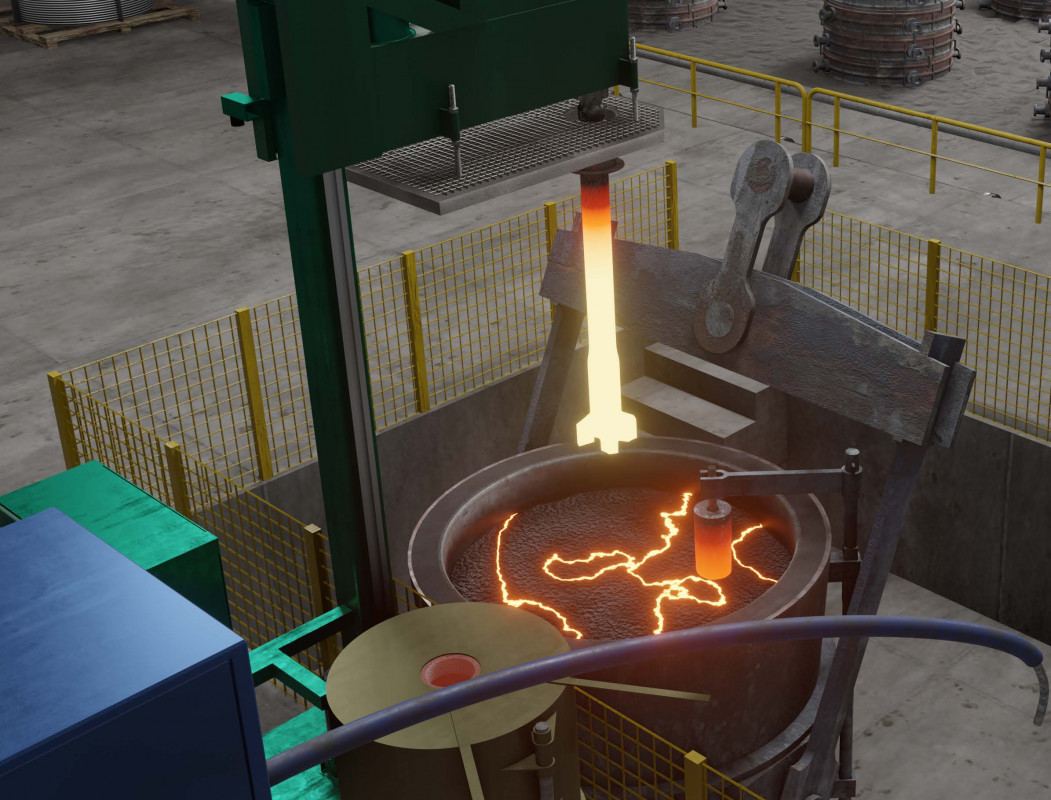

Authors: David Hrabina & Colin Powell, Foseco // Co-Authors: Dalibor Čáp, Milan Turták, Jiří Kolár, UNEX
The Process involves a rotary treatment process that stirs the metal in the ladle whilst passing a curtain of fine Argon bubbles through it. Together with flux and wire additions the process leads to effective inclusion removal, homogenized temperature, modification and desulfurization. The technique allows the steel to be cast at much lower temperatures even semi liquid, resulting in fine cast microstructures and reduced defects.
Introduction
Molten metal in the melting furnace will be clean but tapping into the pouring ladle significantly contaminates it. [1] The metal tapping process is not well controlled and splashed metal exposed to the atmosphere reacts with oxygen forming oxide films having melting temperature greater than temperature of the liquid metal in the ladle. Formed oxide films cannot dissolve or remelt in the ladle and floating up to the surface through their buoyancy would take excessive time due to their large surface area and negligible volume. Injecting treatments and deoxidising alloys such as Al, SiCa, FeTi, and FeZr into the stream of tapped steel makes the situation even worse. Massive amounts of air entrained into the molten metal in the ladle (Fig 1a & 1b) immediately react with those high oxygen affinity elements forming even more non-metallic inclusions and oxide films.
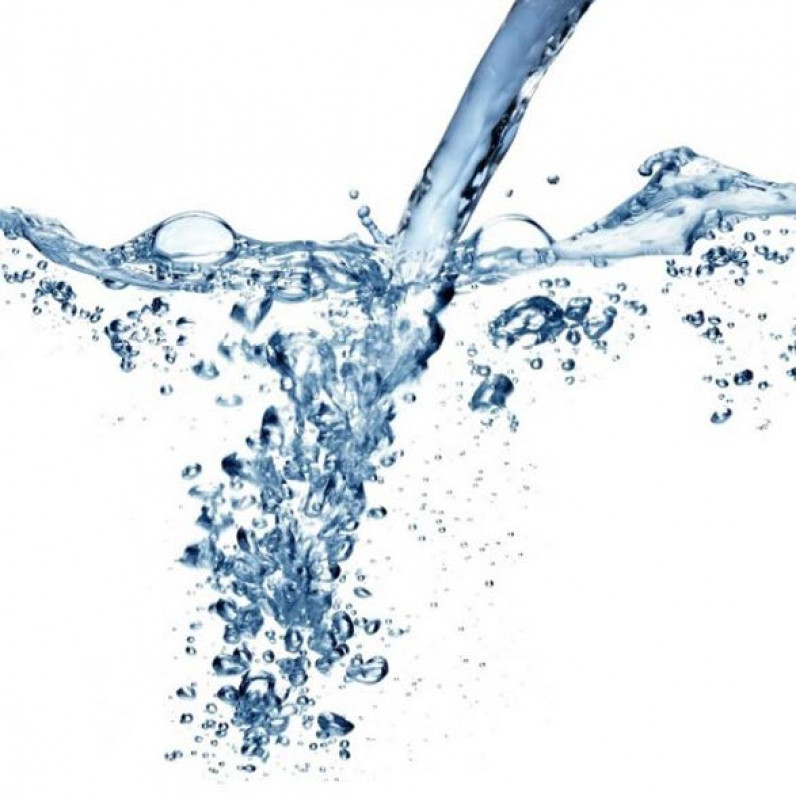
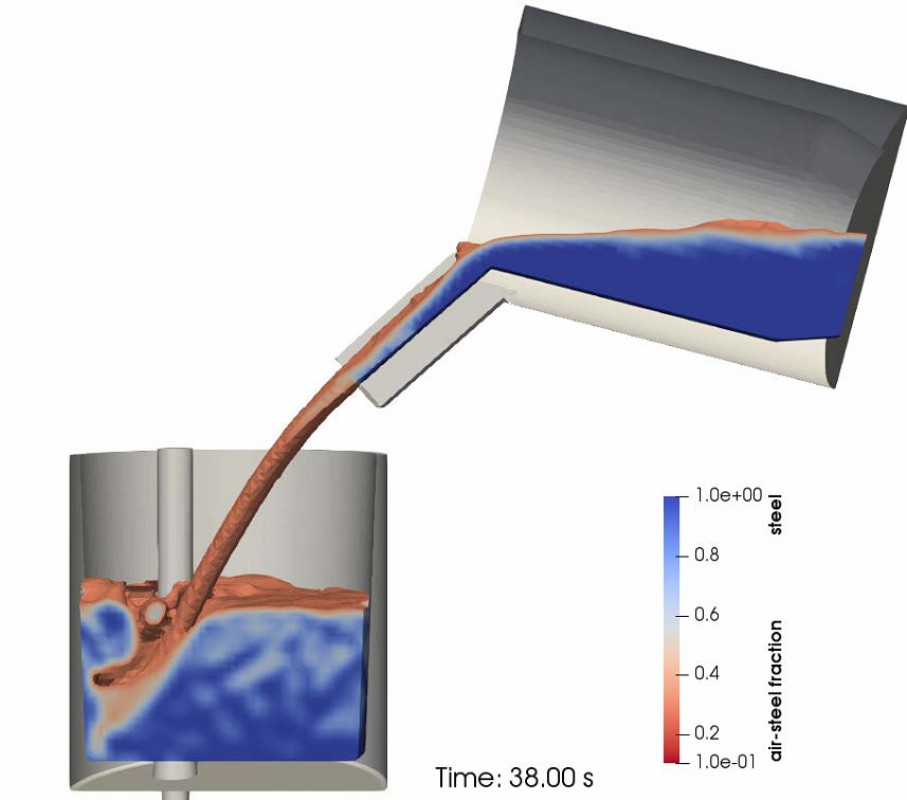
The metal temperature in the ladle may vary significantly in different locations due to the cooling effect of the refractory lining. The difference between the metal temperatures between the bottom and top of the ladle might be tens of degree before the pouring process starts. (Fig. 2a & 2b) Especially sensitive are smaller bottom pour ladles because of the cooling effect of stoppers and nozzles. The coldest metal sinks to the lowest area around the stopper nose and is the first metal to flow into the nozzle when the stopper is lifted up.
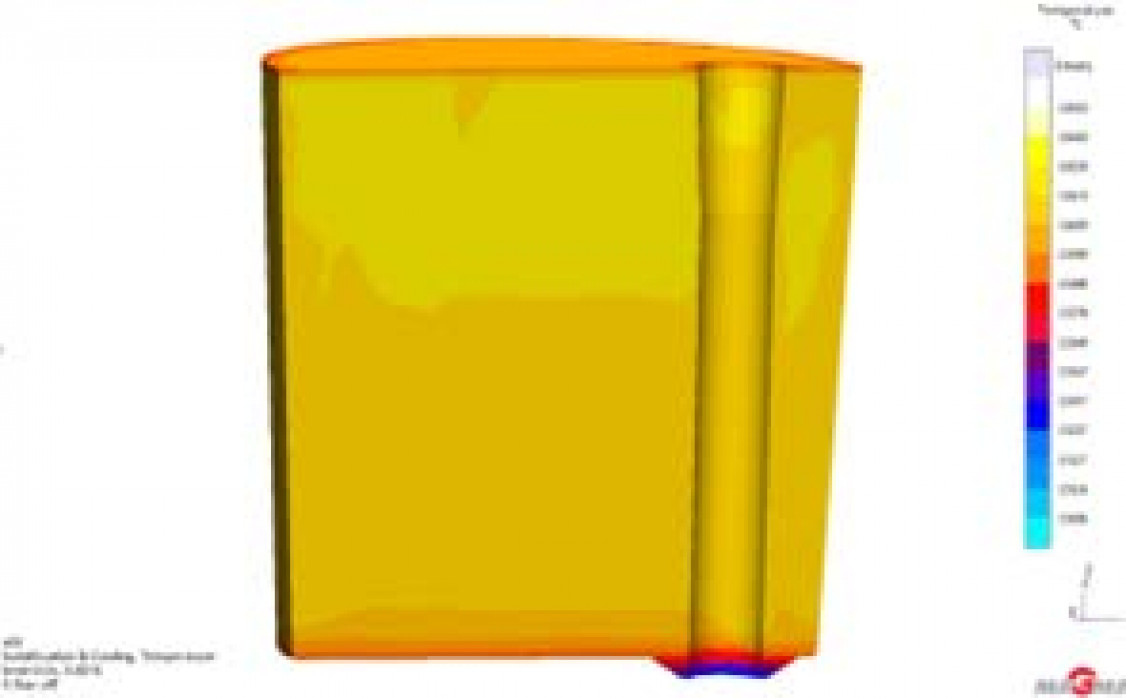
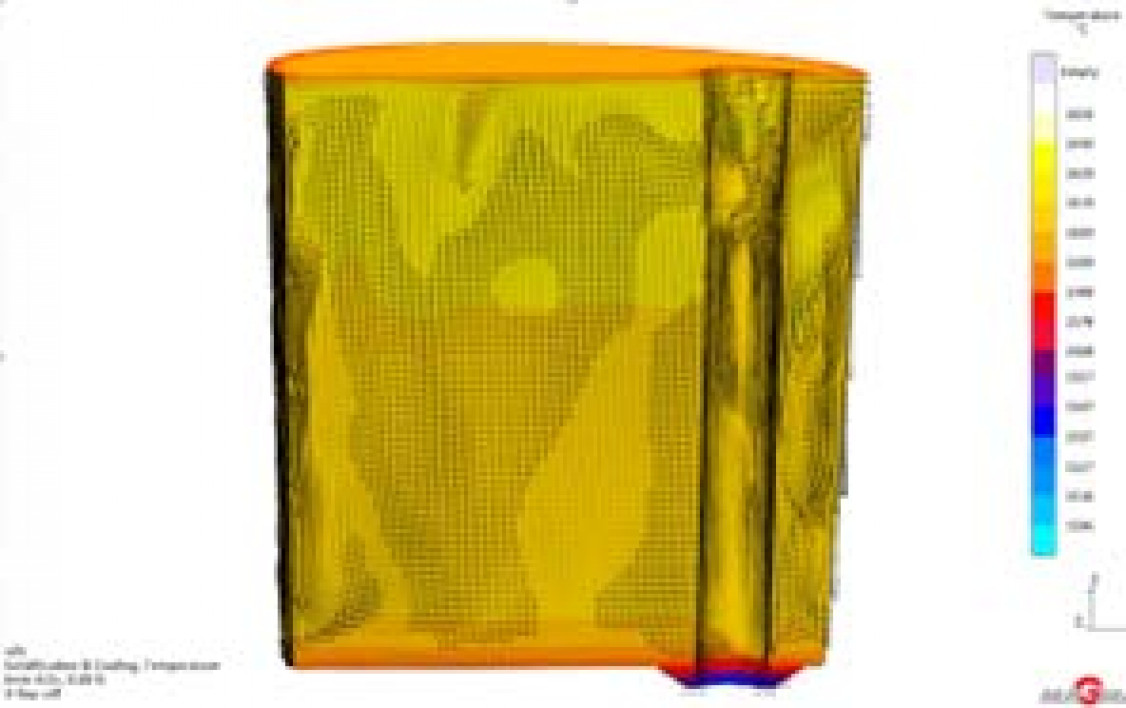
This metal cools even further as it passes through the unpreheated running system and leads to mis-runs and cold shut defects on the casting surface. The pouring temperature is measured by thermo probe at the top of the ladle before pouring starts but this is not representative of metal temperatures at other ladle locations.
The ROTOCLENE process has been developed to treat molten metal effectively in the ladle. For reducing hydrogen and nitrogen pick up we would ideally deoxidise the melt with cored wire before or during the rotary treatment rather than into the stream during metal tapping from either arc or induction melting furnace. A hollow ceramic rotor stirs the molten metal as argon is purged through it gets dispersed to form curtains of very fine bubbles. (Fig 3a)
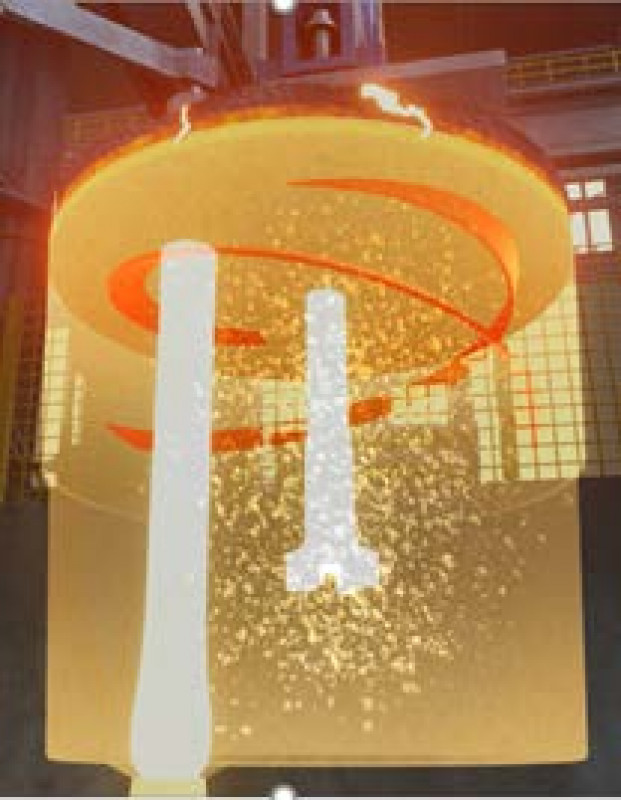
These float up slowly in a helical trajectory that extends their passage through the metal rotating around the vertical axis of the ladle. Slag particles inclusions and oxide films adhere to surface of the argon micro bubbles and float up into the slag layer at the top. The small size of the argon bubbles gives them a long residence time in the melt and together with the extended floating trajectory means that very effective metal purification is achieved (Fig 3b).
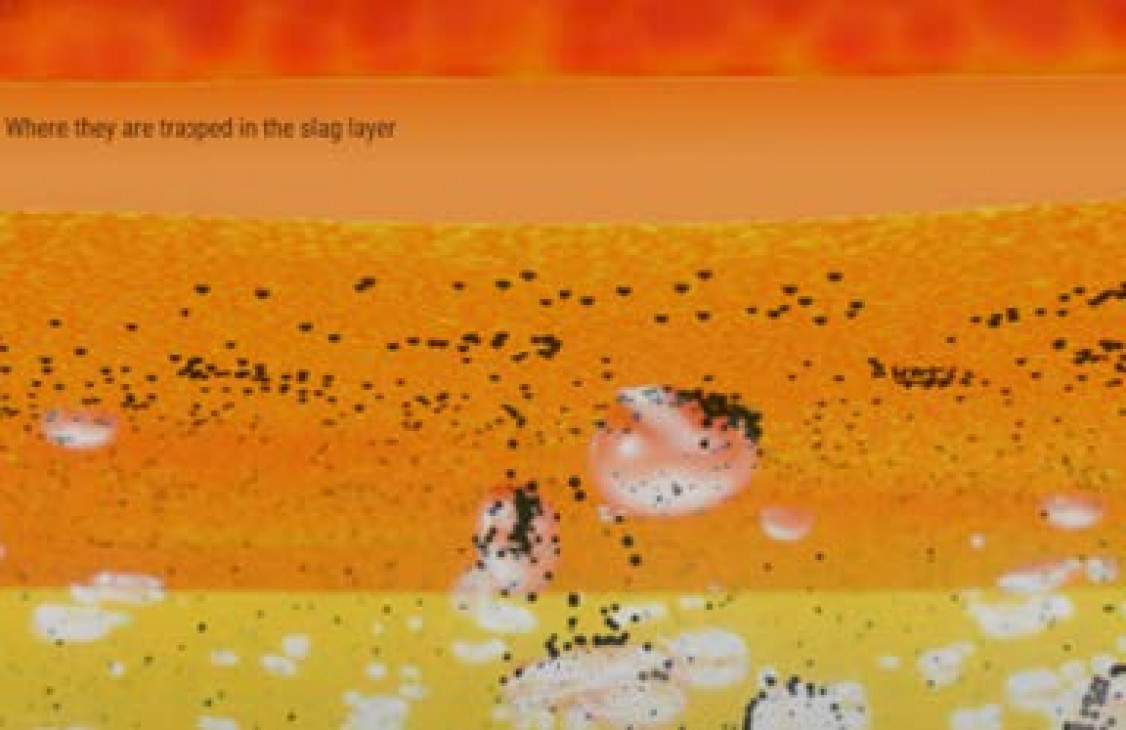
The rotation of the melt also effectively homogenizes metal temperature and eliminates critical cold spots at the bottom (Fig 4a). Molten metal in the ladle keeps rotating through its moment of inertia even several minutes after the end of the rotary treatment. The metal temperature stays consistent at any ladle location without cold spots (Fig 4b) and pouring temperature can be significantly reduced compared to conventional practice.
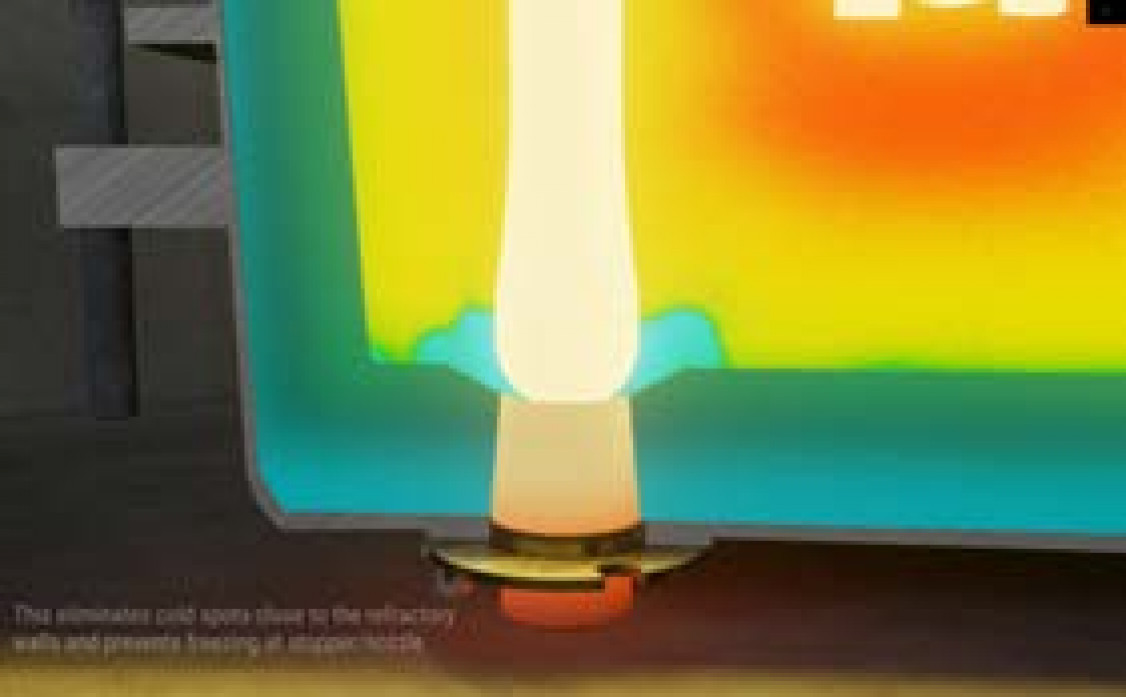
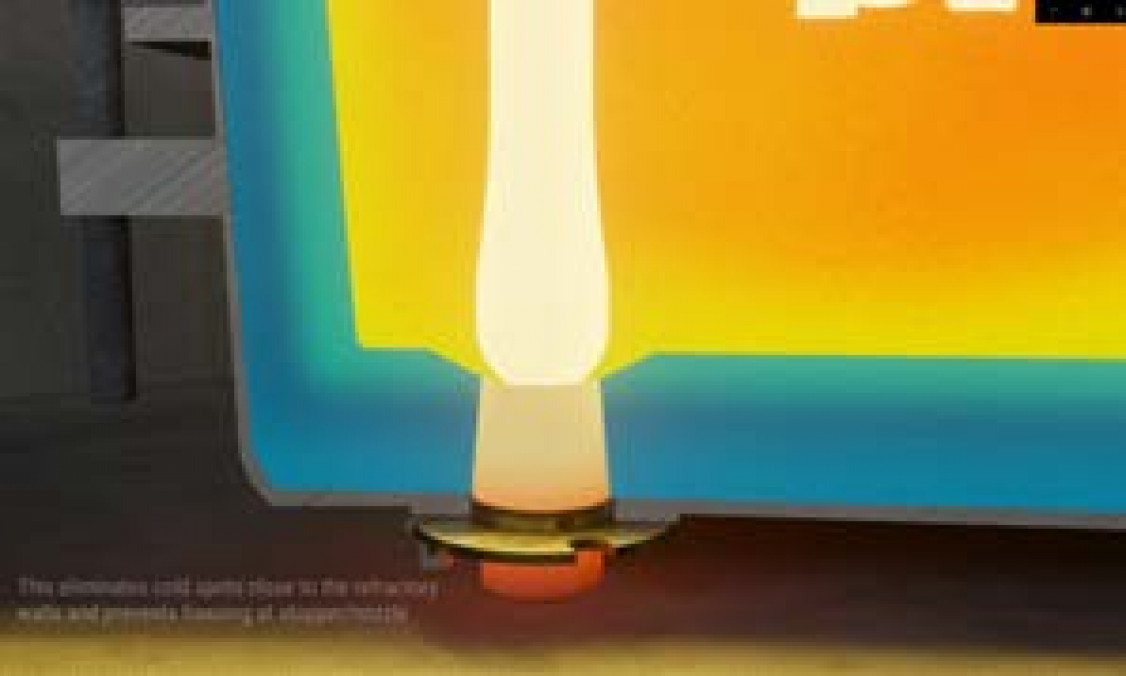
Synthetic slag can also be stirred into the molten metal to partially dissolve nonmetallic inclusions and perform deep desulfurization (Table 1) at the neutral or basic lining ladle similarly to a ladle furnace in secondary metallurgy [2].

The stirring action also allows a deeper deoxidation by extruded pure Ca wire to modify alumina inclusions (Fig. 5) to a more nodular shape more effectively than SiCa [3].
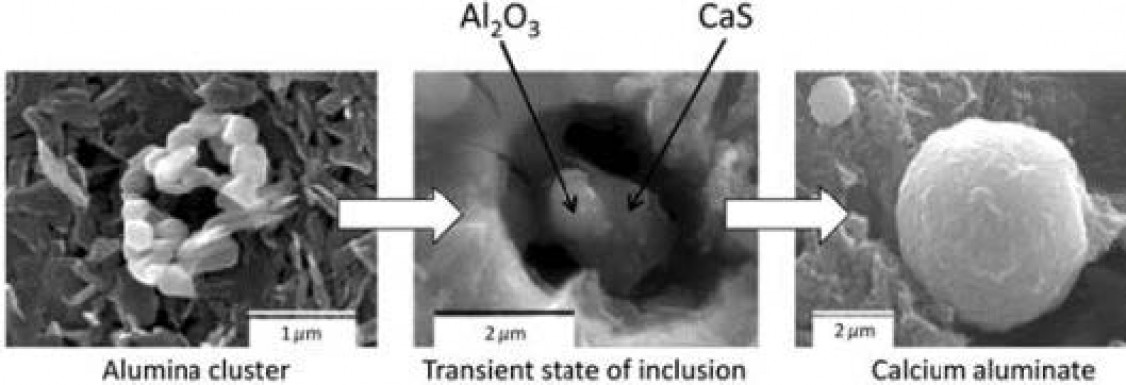
Pure Ca normally reacts too violently with steel and cannot be applied in foundry ladles, however, injecting the Ca into a moving stream dissolves it before it reaches the critical vapour concentration. Pure Ca also does not contribute to premature filter clogging in the way that SiCa typically does.
Metal solidification is very complex process of transformation from liquid phase to solid involving the formation of dendrites and segregation of low solubility elements at the grain boundaries. Atoms are converted from liquid disordered phase to solid ordered phase releasing significant latent heat being accompanied by volumetric shrinkage. [4, 5, 6]. The liquidus point can be identified reliably by the initial chemical composition of the cast metal while the solidus point is varied by the actual metal composition being continuously saturated by segregating elements.
The temperature of the liquidus at any casting part is identical. However, the solidus temperature in thin sections of the same casting is higher than solidus temperature in thick sections. Extended solidification time in the thick casting sections allows dendrites to develop more and segregation at their grain boundaries changes their chemical composition due to the higher concentrations. This phenomenon results in the solidification range being narrower in thin sections and wider in thicker ones within the same casting. Solidification time highly influences the structure and therefore the final mechanical properties of steel castings. Longer solidification times allow dendrites to grow bigger and inter-dendritic segregation is higher (Fig 6, 7a, 7b, 7c, 8) [7, 8].
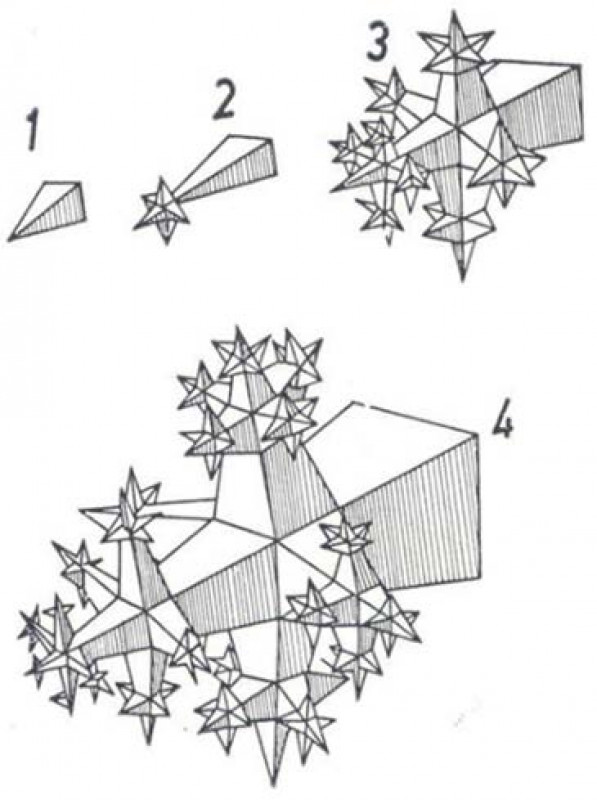
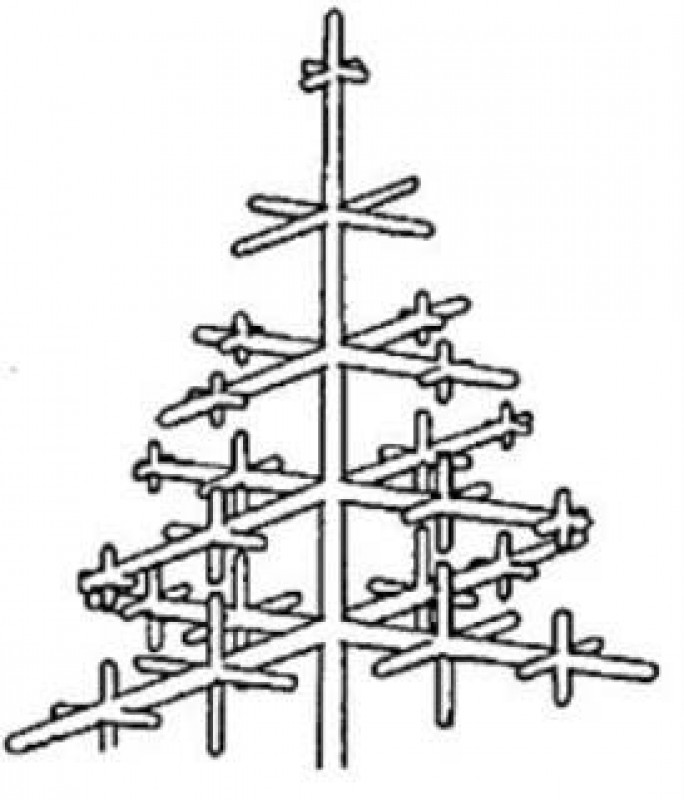

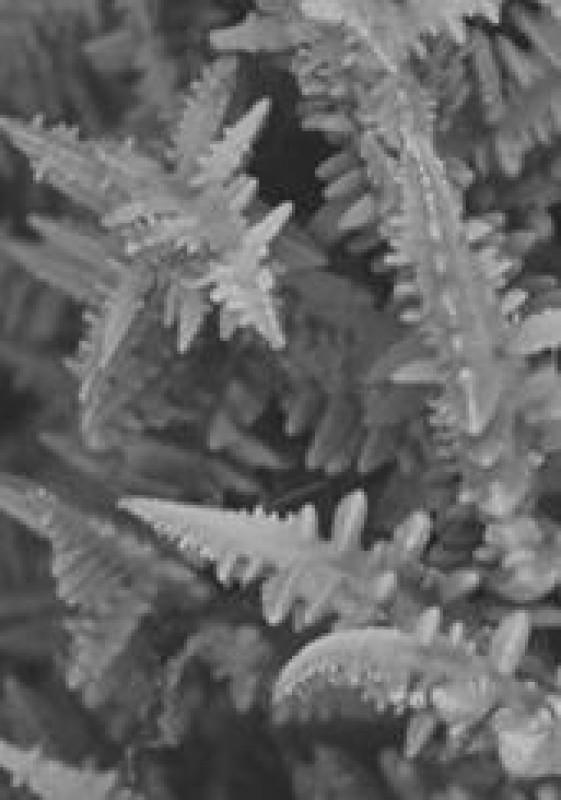
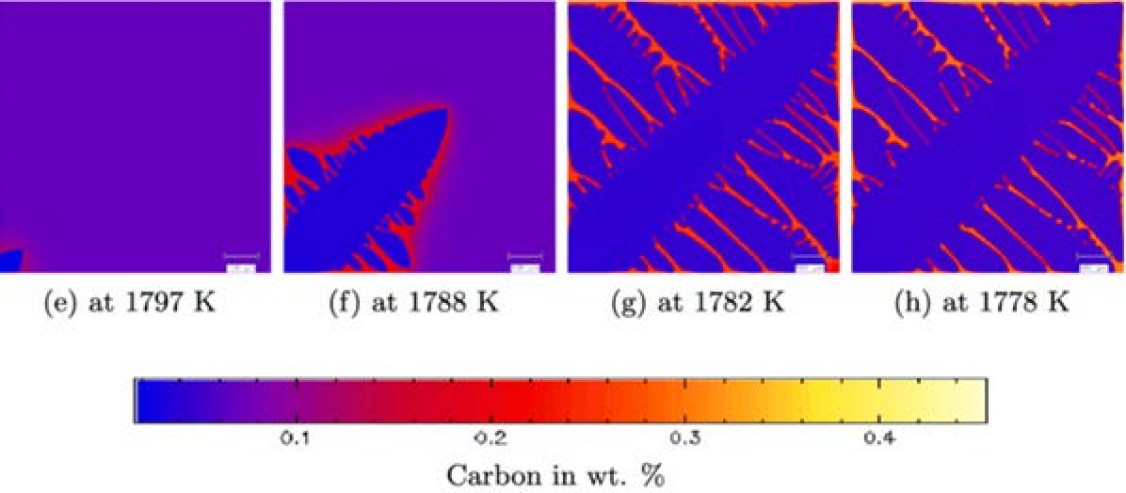
This impacts mechanical properties negatively. Solidification time depends on many parameters but most importantly on cast section modulus and pouring temperature. Modulus is mainly defined by castings geometry while pouring temperature depends on foundry practice. Superheat (the difference from pouring temperature to temperature of the liquidus) is applied to ensure the casting cavity is filled up before solidification starts. The mold absorbs superheat energy from the liquid steel and is heated up before molten metal temperature drops below the liquidus to start the solidification process. Higher pouring temperature leads to more energy absorption by the mold before solidification starts and lowers the capacity for the mold to absorb heat from the solidifying casting. (Fig. 9)
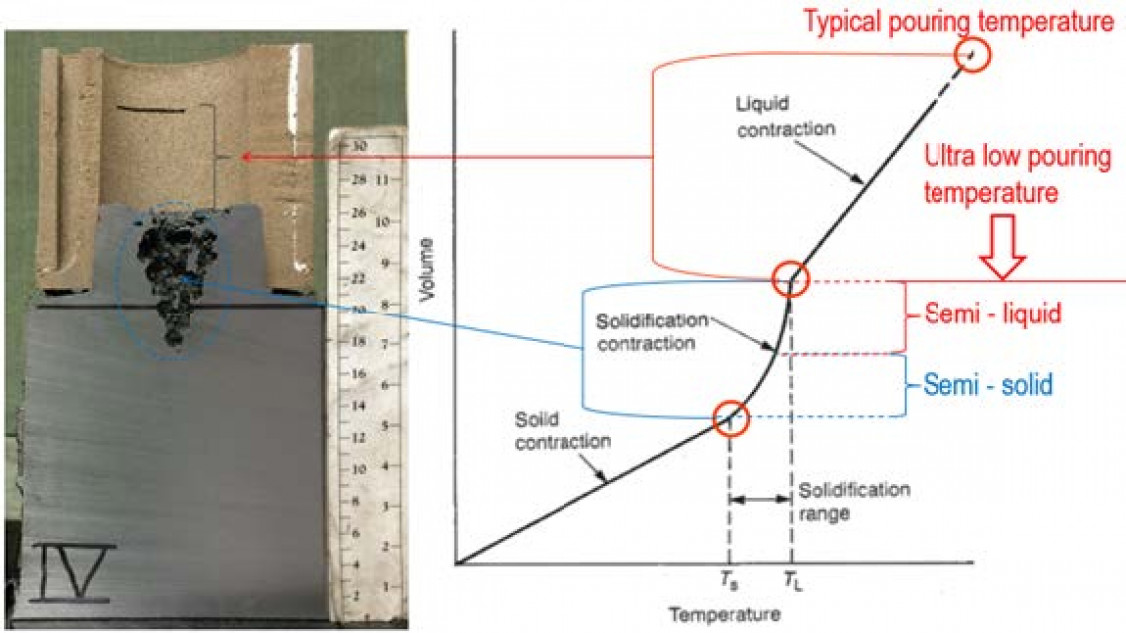
To maximise the reduction of pouring temperature and casting solidification time, the molten metal in the ladle is stirred by powerful ceramic rotor This prevents the embryonic crystals nucleating in the melt from agglomerating and limits the growth of dendrites and segregation when the temperature falls below the liquidus. Latent heat released by solid phase formation slows down metal cooling in the ladle and provides sufficient time to heat up the stoper, nozzle, and lining of the ladle very close to the molten metal temperature.
The requirement to superheat the steel for casting is eliminated and the ultralow pouring temperature, already in the range between liquidus and solidus, ensures that heat energy can be absorbed quickly by cold molds. This leads to immediate solidification achieving a very fine grain size and minimal segregation at the grain boundaries. Metal cast at an ultralow pouring temperature must be protected effectively from reoxidation and air entrainment ideally by a ceramic shroud. Semi-liquid metal is still sufficiently fluid to fill up the mold cavity but pouring time must be very short to avoid cold shuts and misrun defects. Oxide films and entrained air bubbles are not able to float up to the casting surface through semi liquid steel. It may not be possible to produce every casting at ultralow pouring temperature but massive, thick-walled castings which benefit from fast solidification process are exceptionally well suited to this technology. The limit to how far below the liquidus the molten metal stays fluid enough to be cast by gravity is determined by the chemical composition of the steel being cast. Carbon and high strength low alloy steels having a narrow solidification range and high heat conductivity are more sensitive to ultra-low pouring temperature than medium and high alloy steel having solidification ranges that are much wider and heat conductivity that is lower. The feasibility of casting at ultra-low pouring temperature will need to be considered based on the casting size and shape, and individual foundry experience.
Nevertheless any superheat reduction reduces primary grain size and segregation and consequently improves mechanical properties. Casting defects detected by ultrasonic, X-ray or magnetic particle inspection (MPI) are significantly reduced and castings achieve the higher grades of quality acceptance demanded by final customers.
More than one thousand steel melts in range from 3 to 20 tons have already been treated by the ROTOCLENE process. Overall casting results show significant improvement in terms of casting surface, internal homogeneity and metal cleanliness followed by higher mechanical properties compared to conventional technology. (Table 2. Fig 10a & 10b)
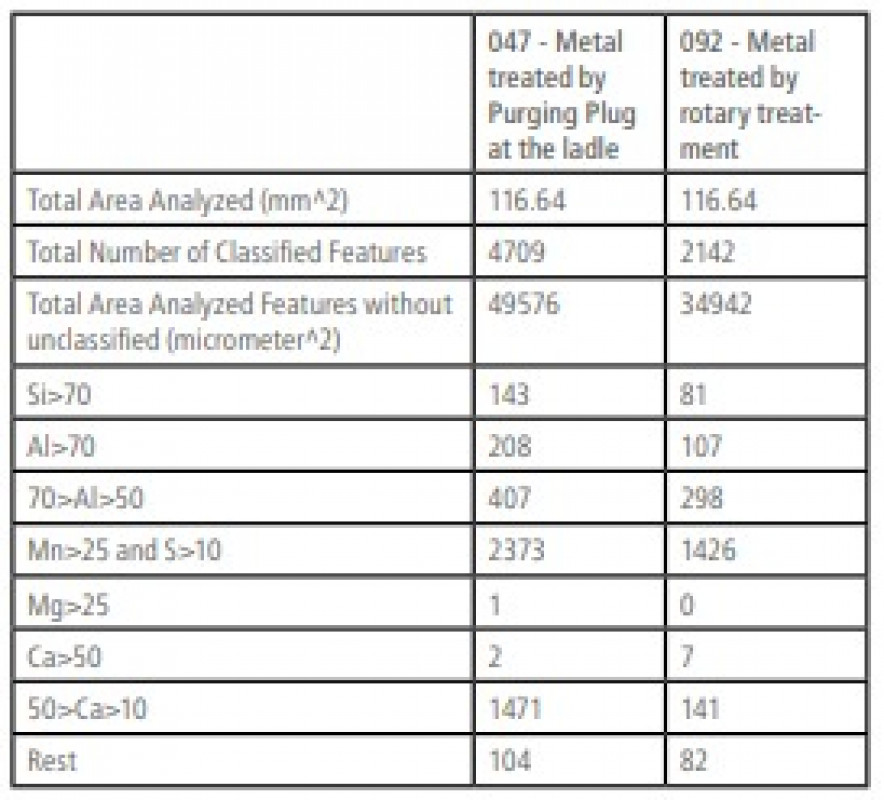
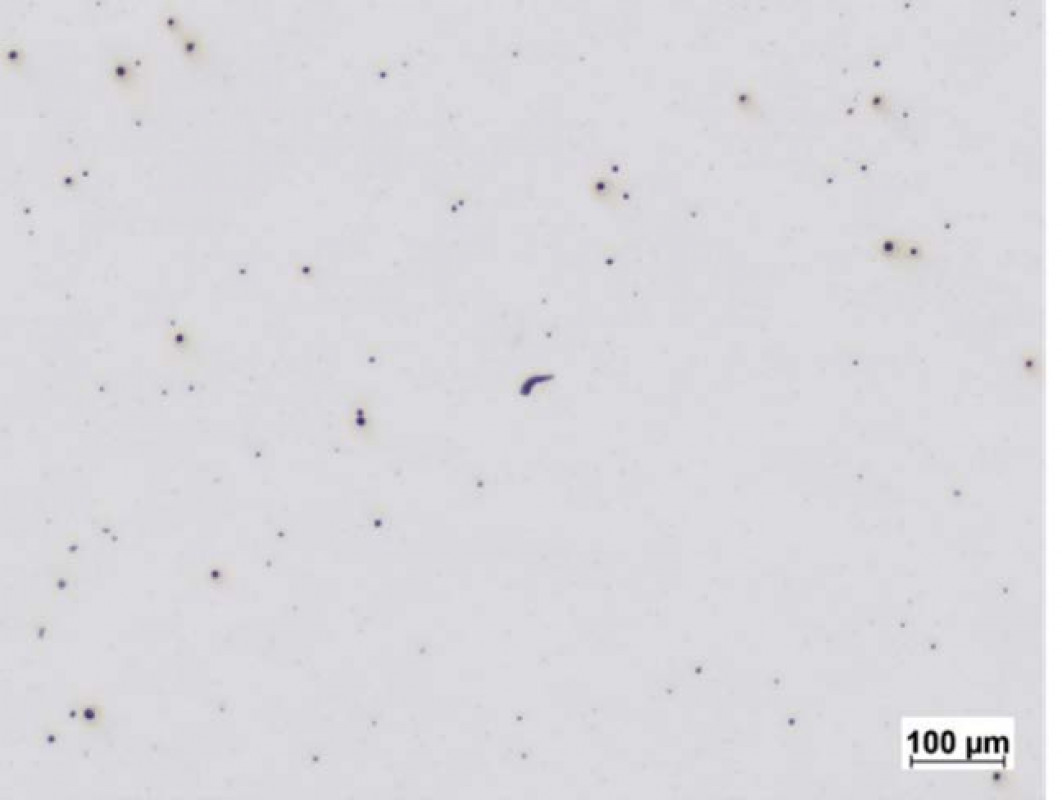
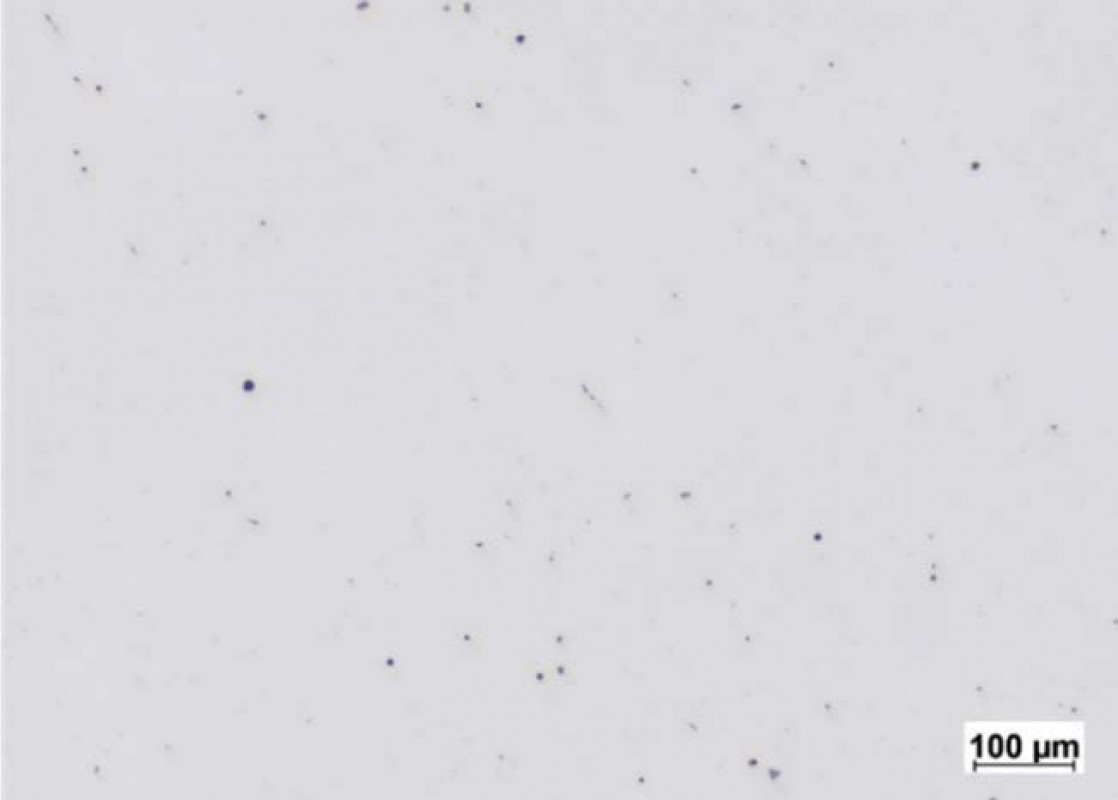
Molten metal exposed to atmospheric oxygen forms oxide films at any time. (Fig. 11a & 11b). Super clean and temperature homogenous metal in the pouring ladle contaminated during the pouring process may still contribute to casting defects [9, 10, 11]. The HOLLOTEX* Shroud is highly recommended to protect cast steel from air entrainment and metal re-oxidation within the casting process, especially in combination with molten metal treated by ROTOCLENE in the pouring ladle.
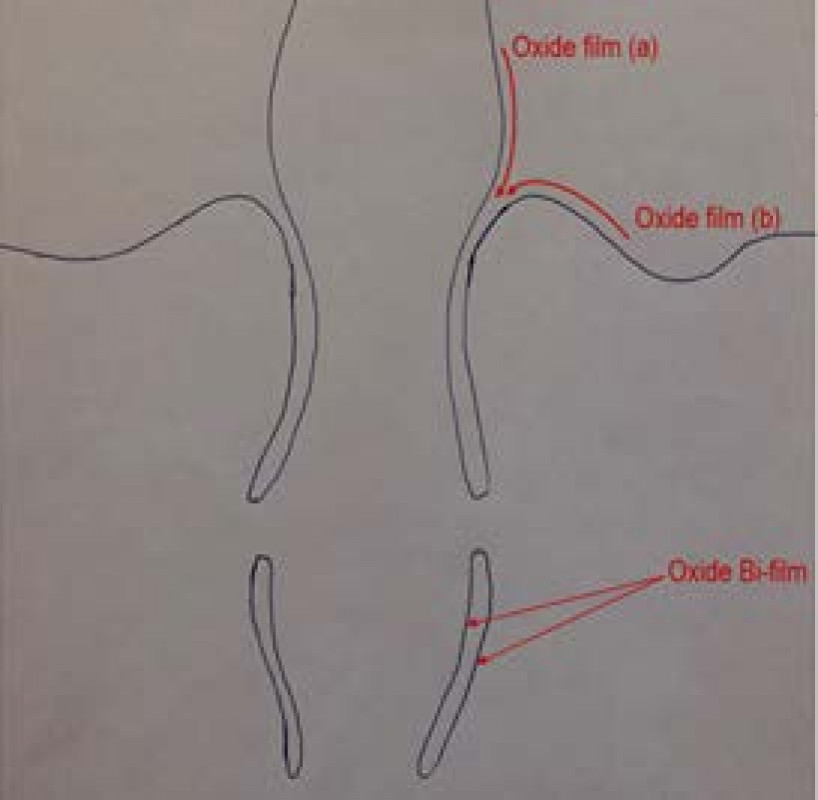

Case study: Piston
This thick piston casting from carbon steel (GS-70) was produced regularly last 10 years and never passed inspection without excessive welding. It’s shape is apparently simple (Fig. 12a) but solidifcation time of about 15 hours (Fig. 12b) leads to excessive dendrite growth and severe segregation complicates feeding within the last solidification stage.


Primary shrinkage has never been present, but ultrasonic echo was always lost within inspection of the bottom hub and upper part under the riser. Repeated heat treatment has been applied to try to refine the grain size and allow ultrasonic inspection but unsuccessfully. Defective parts from the drag (Fig. 13a) and under the riser (Fig. 13b) were machined out by carousel to a depth of 135mm until porosity detected by penetration was removed. Excavated diamater was 300mm in the drag and 400mm under the riser. Porosity detected by penetration test was finally much bigger than identified by ultrasonic test. Additional annealing heat treatment had to be applied after the welding.

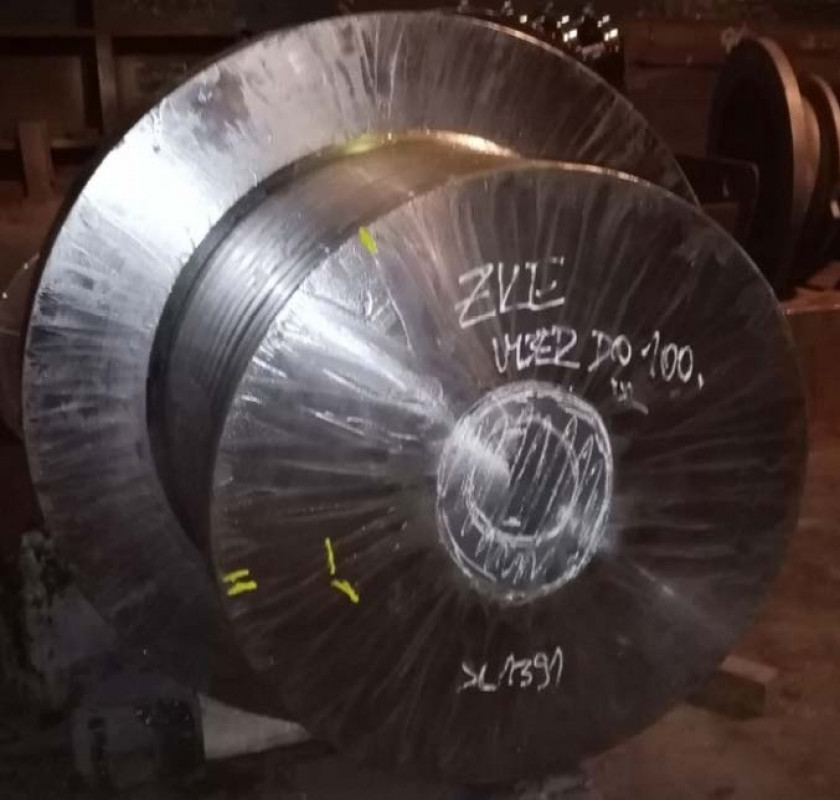
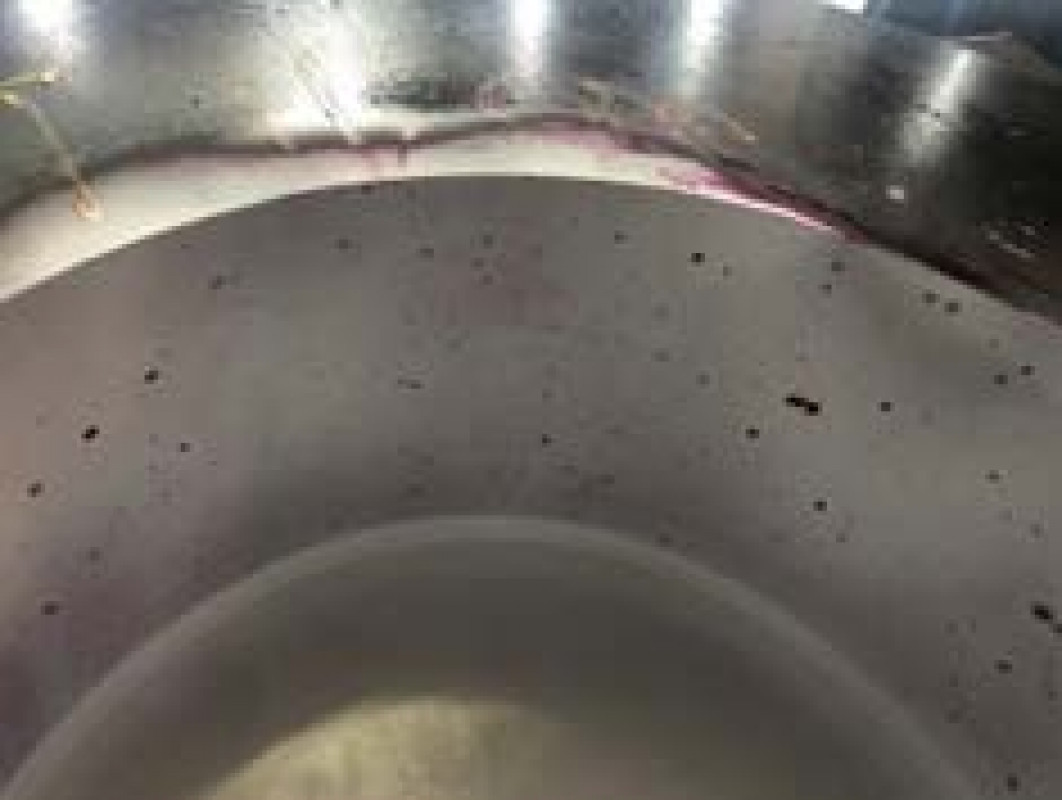
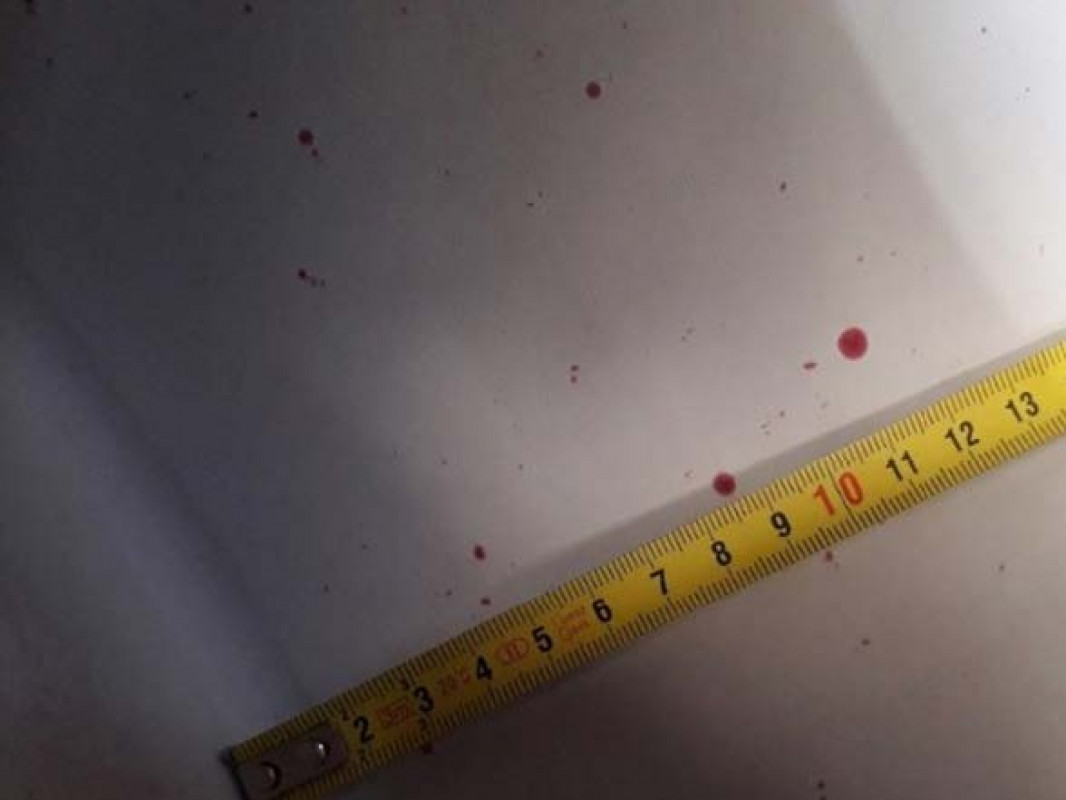
The ROTOCLENE process has been applied to clean up the molten metal and reduce pouring temperature to liquidus level. 7400 kg of steel from EAF was treated in an 8,5 ton capacity ladle for 32 minutes until the temperuture dropped to 1495°C, then the ladle was transfered to the molding shop for pouring which took 7 minutes from the end of rotary treatment. Pouring temperature was 1480°C which was calculated as the liquidus temperature of this melt. Casting was through the HOLLOTEX Shroud to protect cast steel from reoxidation air entrainment and bifilm formation. The mold was filled within 44 seconds. Cast weight was 6400 kg and weight of the casting 3700 kg. There was no trace of molten metal freezing in the ladle. This casting passed ultrasonic inspection successfully without welding (Fig 15).

Operation of the ROTOCLENE process even under the liquidus temperature has been tried for other castings. The challenge is to measure metal temperature when it drops under 1500°C. Thermo probes for steel suffer from slag freezing on the metallic cup protecting the thermocouple and mostly does not record the temperature. Metal was treated until the temperature dropped under 1480°C before casting. There was some residual metal frozen in the ladle bottom but this could be cleaned up by oxygen lance when the ladle was emptied. One mold from the ladle can be cast from such ultra low pouring temperature significantly under the liquidus, but the casting must be thick and not sensitive to cold shuts or mis-runs. Pouring of more than one mold from the ladle might be problematic as metal may start to solidify at the nozzle to shroud connection.
Summary
ROTOCLENE – Rotary treatment of molten steel is an innovative technology allowing higher level of metal purification and temperature homogenization at the pouring ladle. Rotating molten steel heats up the ladle lining and stopper avoiding premature metal solidification at the ladle and stopper freezing risk. Treatment can be continued until metal temperature cools down to the desired pouring temperature regardless the metal holding time. Steel may be further desulfurized by synthetic slag stiring and alumina inclusions modified to less harmful globular shape by pure Ca. In combination with HOLLOTEX Shroud pouring temperature may be significantly reduced and cleaner castings achieved with finer grain size and higher levels of homogeneity.
References
[1] J CAMPBELL. (2015). Complete Casting Handbook: Metal Casting Processes, Metallurgy, Techniques and Design (2nd ed.). Oxford, UK: Elsevier
[2] CHAO FAN, ALEXIS GOSA, LIFENG ZHANG, QINGCAI LIU and DAYONG CHEN. The Minerals, Metals & Materials Society (2018) Mathematical Modeling on the Fluid Flow and Desulfurization During KR Hot Metal Treatment
[3] N. VERMA, PETRUS C. PISTORIUS, RICHARD J. FRUEHAN, MICHAEL POTTER, MINNA LIND, and SCOTT R. STORY, Transient Inclusion Evolution During Modification of Alumina Inclusions by Calcium in Liquid Steel: The Minerals, Metals & Materials Society and ASM International (2011)
[4] UPENDRA KUMAR MOHANTY, HRUSHIKESH SARANGI, Solidification of Metals and Alloys (2020)
[5] M. STROUHALOVA, Studium Fazovych Zmen v Oceli Behem Jejiho Tuhnuti – VSB TU Ostrava – Doctor Thesis (2018)
[6] E. Munsterova, Obecne Udaje o Fazovych Premenach Behem Tuhnuti, Brno (2005)
[7] R. WLODAWER, Directional Solidification of Steel Casting book. (1966)
[8] M. Amirthalingam, E. M. van der Aa, C. Kwakernaak, M. J. M. Hermans, I. M. Richardson, Elemental Segregation During Resistance Spot Welding of Boron Containing Advanced High Strength Steels (2015)
[9] D. HRABINA, P. FILIP. Foundry Practice 267, ADVANCES IN THE POURING OF STEEL CASTINGS WITH A SHROUDED METAL STREAM (2019)
[10] CH. BECKERMANN & S. H. MAJIDI, University of Iowa – Simulation of Air Entrainment during Mold Filling: Comparison with Water Modeling Experiments, Steel Foundries Society of America, Chicago IL, USA 2017
[11] K.T.KIGER & J.H.DUNCAN – Air Entrainment Mechanism in Plunging Jets and Breaking Waves (2012)

